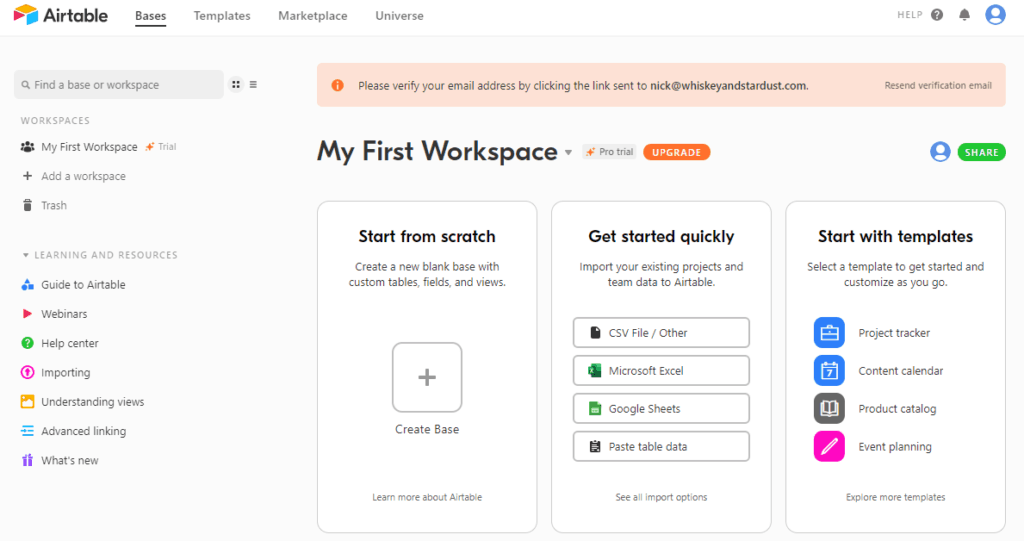

Airtable reporting dashboard how to#
We talk more about it in the How to create a dashboard in Airtable using Interface Designer? chapter. It offers drag-and-drop functionality for adding new elements to your Airtable dashboards and can be customized to a great extent. It’s a feature built specifically with dashboards in mind.

The other native method is with the recently launched Interface Designer.
You’ll read more about it in the How to create a dashboard in Airtable using Extensions? chapter. There are many available options, the majority focus purely on helping you make more sense of your data. The first method relies on Extensions (previously known as Apps) that you can add to your bases.
Airtable reporting dashboard free#
The first two approaches are available within Airtable and are accessible, to some extent, even on the free tier. Each is a bit different and will suit a slightly different audience from beginners to experienced analysts. We’ve tried various ways of building Airtable dashboards and have come up with three viable methods. Three approaches to building an Airtable reporting dashboard Every stakeholder can find the information they need quickly, without the need to distract anyone from their work. They keep everyone in the loop, answer questions before they arise, and make every discussion more factual. Better transparency – dashboards are invaluable when working with multiple stakeholders, including those that don’t even use Airtable.Staying on top of such events with the help of an Airtable dashboard template will allow you to react faster and capitalize on arising opportunities. It could be sales or response time suddenly deteriorating, an increased engagement from a particular user segment, or a sudden roadblock you may have missed before. Often, you need to draw a good-looking chart to spot what didn’t seem that obvious before. Spotting trends, opportunities, and bottlenecks – Raw data won’t tell you everything.This, as a result, streamlines decision-making and makes the company more data-driven. Aggregating that data and putting it on an Airtable reporting dashboard as scorecards or charts gives you a quick overview of how a business or a project performs. Better monitoring of business metrics – With thousands of records on your bases, it’s hard to see the big picture.There can be many different reasons for building dashboards because there are so many benefits of having one. Which option is best to make an Airtable dashboard template? Why build a dashboard in Airtable?


 0 kommentar(er)
0 kommentar(er)
